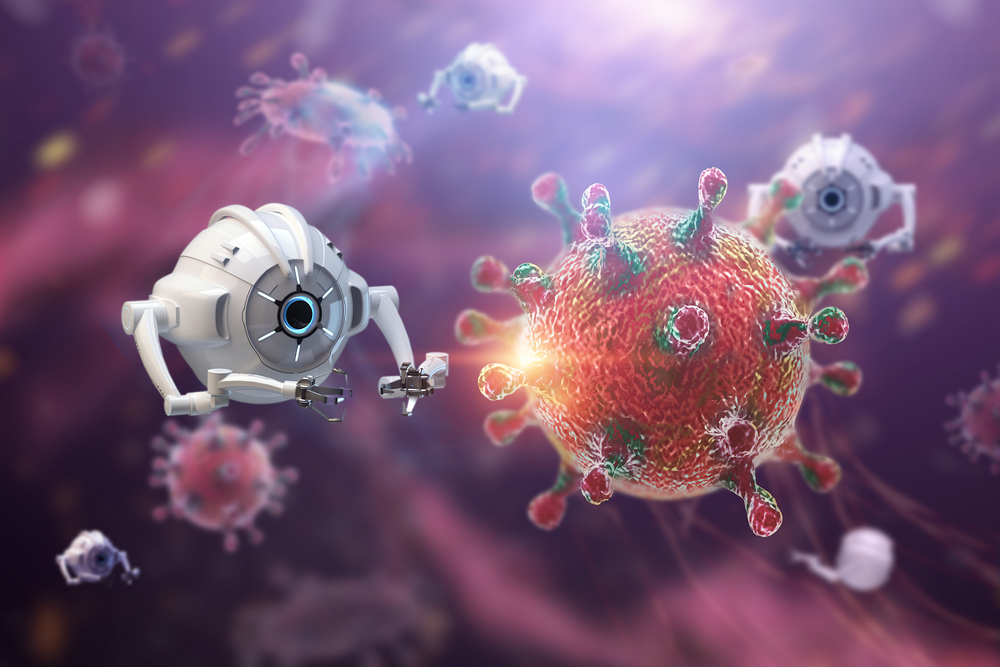
Micro-roboticists are working towards a new way of delivering cancer-killing compounds – called enterotoxins – to tumors using bionic bacteria that are steered by a magnetic field. These engineered microbes will function as “micro-robots” that can hunt down and converge upon a specific tumor, where they would then release their own naturally produced anti-cancer chemicals to shrink it. As described by Simone Schürle-Finke from the Swiss Federal Institute of Technology in Zürich, Switzerland – and one of the authors of the new study – once the microbes reach the tumor, “you basically have a little nano-factory that continues to release molecules that can be toxic to cancer cells.”
Some tumors are inoperable or unable to receive injections due to their inaccessible locations, so using microbes that could be guided in their trajectories would be a break-through in treatment. The team decided to test the use of a unique group of aquatic bacteria that use tiny iron crystals produced in their bodies like an internal compass. They theorized that the magnetotactic bacteria should be able to be guided within a patient’s body by an external magnetic force. To test this theory, Schürle-Finke’s team equipped the bacteria with fluorescent tags and nanoparticles filled with drugs. The result was genetically engineered bacterial robots whose nanoparticles could propel them to release cancer-fighting compounds on demand. They then injected these micro-robots into cancerous mice and used an externally generated magnetic field to direct the bacteria toward the mice’s tumors. They were able to achieve this goal with more than three times the precision of the control group which was not exposed to any magnetic field.
The study is presented as a solid proof-of-concept, micro-robotic bacteria technology, but requires refinement before it becomes a mainstream cancer treatment. One factor needing further examination is the fact that magnetotactic bacteria are foreign to the human body and do not naturally produce cancer-fighting compounds. In future, bioengineers may try to identify the genes responsible for producing magnetotactic bacteria’s magnetic iron pellets and transfer them to a more familiar organism, such as a harmless strain of E. coli, Salmonella, or Clostridium.
